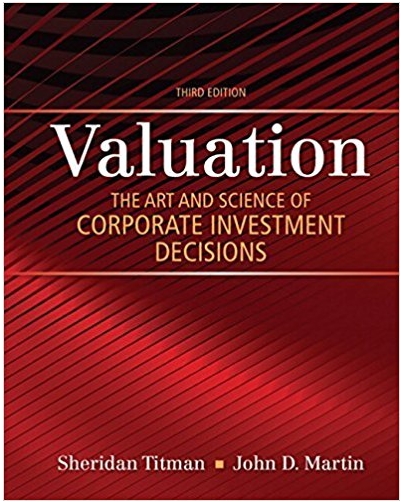Harrington Explorations Inc. is interested in expanding its copper mining operations in Indonesia. The area has long
Question:
The company€™s geologists also estimate that the ore will be of about the same purity as existing deposits, meaning that it will cost $ 150 to mine and process a ton of ore containing roughly 15% pure copper. The company estimates that there are 75,000 tons of ore in the new vein that can be mined and processed over the next five years at a pace of 15,000 tons per year.
Harrington€™s CFO asked one of his financial analysts to come up with an estimate of the expected value of the investment using the forward price curve for copper as a guide to the value of future copper production. The forward price curve for the price per ton of copper spanning the next five years when the proposed investment would be in production is as follows:
x.png)
In a study commissioned by the CFO last year, the firm€™s cost of capital was estimated to be 9.5%. The risk-free rate of interest on five-year Treasury bonds is currently 5.5%.
a. Estimate the after-tax (certainty-equivalent) project free cash flows for the project over its five-year productive life.
b. Using the certainty-equivalent valuation methodology, what is the NPV of the project?
c. Assume now that the analyst estimates the NPV of the project using the certainty-equivalent methodology and it is negative. When the firm€™s CFO sees the results of the analysis, he suggests that something must be wrong because his own analysis using conventional methods ( i. e., expected cash flows and the firm€™s weighted aver-age cost of capital) produces a positive NPV of more than $ 450,000. Specifically, he estimates that the price of copper for 2016 would indeed be $ 7,000 per ton but that this would increase by 12% per year over the five-year life of the project. How should the analyst respond to the CFO€™s concerns?
Cost of capital refers to the opportunity cost of making a specific investment . Cost of capital (COC) is the rate of return that a firm must earn on its project investments to maintain its market value and attract funds. COC is the required rate of...
Step by Step Answer:

Valuation The Art and Science of Corporate Investment Decisions
ISBN: 978-0133479522
3rd edition
Authors: Sheridan Titman, John D. Martin





